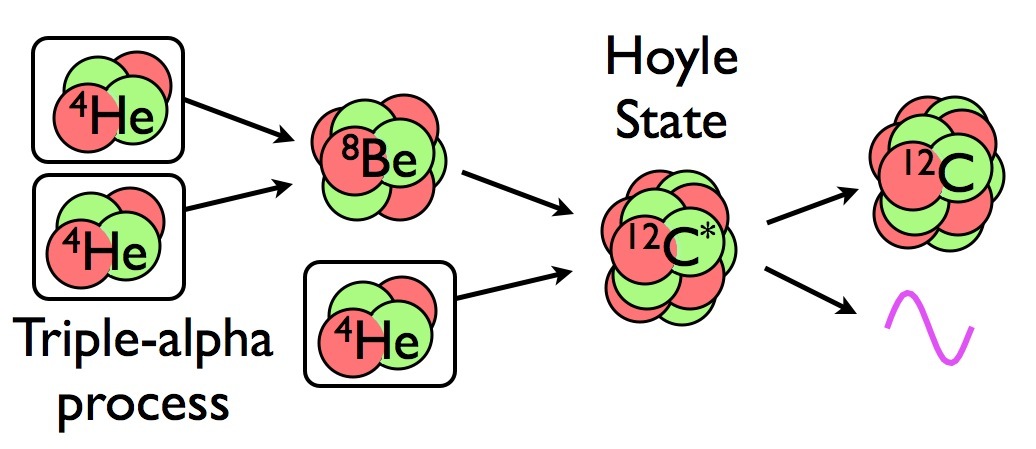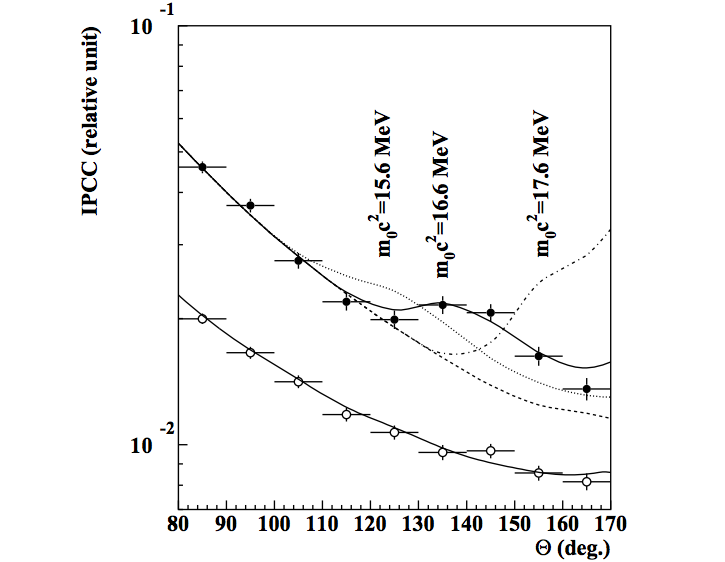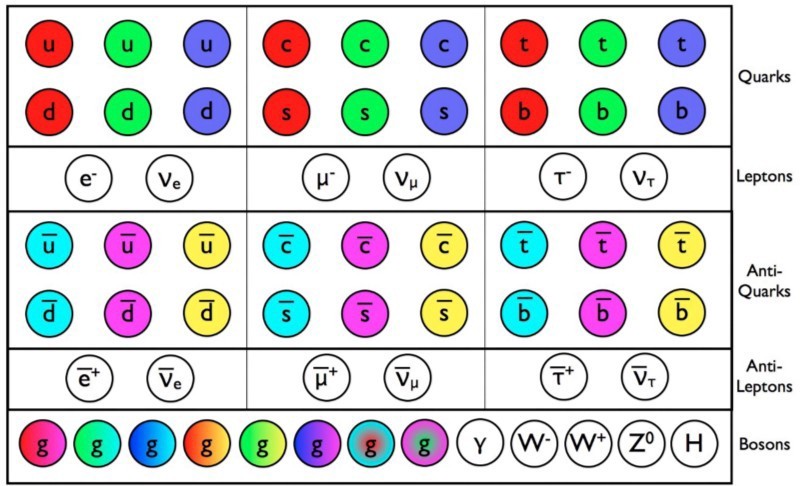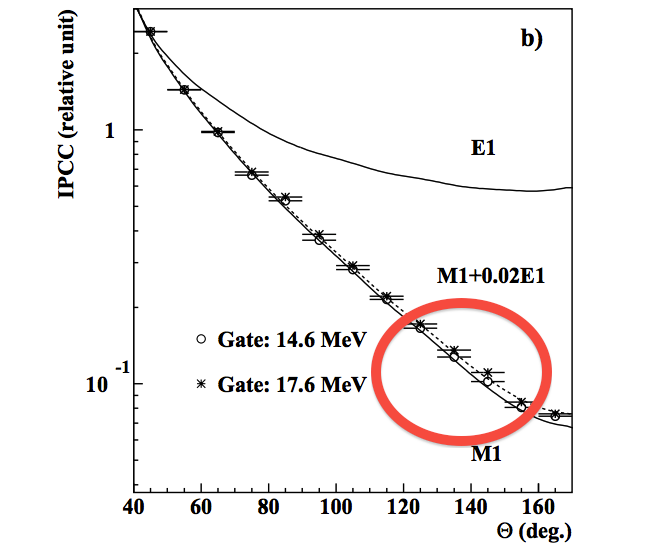Ask Ethan: Is it true that there is evidence of the existence of a new, fifth interaction?

The model of the accelerator used to bomb lithium in a key experiment. Located at the entrance to the Institute for Nuclear Research at the Hungarian Academy of Sciences.
The standard model of elementary particle physics — particles and their interactions, describing everything that we have ever created or confronted in the laboratory — does a surprisingly good job of predicting everything that is seen in our experiments. From matter to antimatter, from synthesis to fission, from massless to the heaviest particles — these fundamental rules have passed all experimental tests. But perhaps in the traces of radioactive decay hides an unexpected phenomenon. Our reader from Hungary wants to know:
News about the opening of the fifth interaction in Hungary is very widely covered. I would be interested to know your point of view on this. Do you think this is true, or are you skeptical?
If you have seen the opening of the fifth interaction, the experiment in question is based on an extremely unstable isotope: beryllium-8.

')
If we talk about the constituent matter, then the most important part of the puzzle will probably be this isotope. Our Sun, and almost all the stars, receive energy by synthesizing helium from hydrogen, in particular - helium-4, with two protons and two neutrons. In the later stages of life, the core of the Sun, filled with helium, will shrink and warm up, and try to create even heavier elements. If you combine two nuclei of helium-4, you can get a nucleus with four protons and four neutrons: beryllium-8. The only problem is the extreme instability of beryllium-8, which after 10 -17 s disintegrates back into two helium-4. Only in the nuclei of red giants the density of matter is high enough so that the third nucleus of helium-4 can be adjusted in time and create carbon-12, and successfully build ever heavier elements.

Otherwise, as in all laboratory experiments, beryllium-8 simply decays back into two helium nuclei. But our experimental technologies are very clever, and even in the short moments of his life we can not only create beryllium-8 in another way (by bombarding lithium-7 with protons), but also create it in an excited state, in which it will emit a high-energy photon before decay. This photon will have enough energy to be able to decay into an electron / positron pair - which happens to all photons of sufficiently high energies. By measuring the relative angle between the electron and the positron, you expect it to be the smaller, the greater the photon energy. This follows from the laws of conservation of energy and momentum, with an admixture of small random variables depending on the orientation of the decay.

But the Hungarian team, under the leadership of Atilla Rednahorkai, did not discover this at all. As the angle increases, the proportion of electrons and positrons should decrease. But scientists have discovered an unexpected relative increase at an angle of expansion of 140º, which can mean a lot. For example:
• Error in the experiment, when not the signal is measured, but something else.
• Analysis error when using the wrong slice (you decide which data is worth leaving, and which information will be useless contaminating noise that must be eliminated).
• If the result is reliable, it may indicate the existence of a new particle: either a composite, consisting of particles of the standard model, or, more interestingly, a completely new, fundamental one.
The data seems quite good. Of course, the same Hungarian team announced the discovery of “irregularities” in the decays of excited beryllium-8, but not with such a degree of significance - 1 chance out of 10 11 that this is a statistical randomness (6.8-σ) - and not with such number of events: hundreds of events in many channels over the background. Only a massive unstable particle would have decayed with a different angle of scattering than the massless particles (photons) expected in this experiment - and this is still the main explanation for the “roughness” of the graph at 140º. If this proves true. Krasnahorkay expresses greater confidence in his result, measured with the help of equipment, thoroughly updated in comparison with their previous experiments.

The result may not be justified; it may not be able to reproduce; This may be an experiment error. This is the best part, but at the same time the burden of scientific work: even the most reliable and breakthrough results must be confirmed independently. But if it is a new particle, it can change everything. The rest energy of the particle - 17 MeV / c 2 - is very interesting. Its spin is 1, which indicates that it is a boson (or something similar). She moves a large enough distance to measure her lifetime, 10 -14 seconds - which tells us that this is a weak, not electromagnetic, decay - that is, it is not a bound state of leptons. This cannot be a combination of two quarks, because it is too light - otherwise it would have to be 10 times harder. If it is a real particle, it is most likely some kind of completely new type of particles , not included in the Standard Model.

This explanation fits everything:
• It would lead to the appearance of just such a scattering angle (140º) of decay products, due to the ratio of its rest mass to the masses of the electron and positron, into which it decays.
• It would give us the first exit from the Standard Model, which, in our opinion, should exist, and which we have not yet found.
• In potential, it could even explain the anomalous value of the magnetic moment of a muon, a heavier relative of an electron.
But this is only if the particle really exists. The result of 6.8-σ would be exciting in the case of blind analysis, but the team of scientists specifically looked for a particle of this type. In science, there is a history of finding exactly what scientists were looking for, even when in fact it did not exist. Focke de Boer - who conducted these experiments before Krasnahorkai - discovered such particles, but was never able to confirm and reproduce his results.

We know that outside the Standard Model there should be a new fundamental physics, new particles and new interactions, and perhaps in this experiment the first hint of this was discovered. But, responding to the reader's question, I am also skeptical about the results, and I can imagine that they are real. The discovery of neutrinos moving faster than light on OPERA and the discovery of the Higgs boson in the CMS / ATLAS experiments differed in the same quality. Only time and additional research will determine what type this new result will turn out to be, potentially having the potential to be a particle of dark matter.
Source: https://habr.com/ru/post/403883/
All Articles